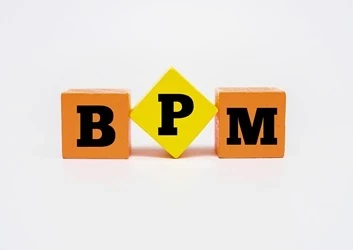(C x 8) + FMT = A Formula for Better Process Change
Add bookmarkWhat if I told you there was a secret formula that, if followed, would help your next process change go smoother and faster? 'Secret' because it involves components brought together from different disciplines, fine-tuned behind the secured gates of a few Fortune 500 companies, and not necessarily available at your local library. The best news? It is free, quick to learn, and can be applied immediately. The bad news? It’s deceptively simple. Like golf, it’s learned quickly but can take a lifetime to master…
Our rallying cry with this formula comes from an unlikely source: Mr. Rogers. To paraphrase one of his quotes: 'simple and deep is more essential than complex and shallow.' Thus, we avoid partial derivatives and a 14-step calculation for our formula. We only have two variables in our equation, but robustly addressing each will give you quite an advantage over the typical process change.
So what is this secret formula?
C = [Communications] and FMT = [Failure Mode Thinking]
Let’s break it down:
(C x 8)
Of those process change efforts that fail, many are caused by a severe underestimation of the need to communicate. The resulting confusion, unmet expectations, and frustration have derailed many changes. Why 8? One of my mentors always told me that if you want to get your message heard in a busy world, you need to communicate it eight times and in eight different ways. That carefully worded 600 word email you broadcast out to everyone describing your change may be just one of 154 emails each person receives that day. With the tsunami of information washing over workers each day, it’s a wonder they remember anything. How can you make your communications stand out? You employ multiple communication channels: print, video, electronic, in person. Also, your audience will focus on different aspects of your communications: some are visual, some want details and others just the bottom line for example. You also get to control when things are communicated, their length, and who does the communicating. Be creative – there are many choices open to you for communicating.
FMT
Failure Mode Thinking is all about proactively pondering what could possibly go wrong with your process change. Then, develop countermeasures to either prevent that or address it if it occurs. Engineers and quality experts use FMEA (Failure Mode and Effects Analysis) all the time in designs of products, structures, and processes. We’ll use it for a process change rollout. Nothing worse than assuming everything will go smoothly and then being surprised by something that disrupts your rollout. Especially if that 'something' could easily have been anticipated in advance and avoided. While not true in all cases but in some, every minute you spend proactively error-proofing your change saves you an hour of reactive damage control during rollout. Look at your To-Do list or rollout plan and ask yourself 'What could possibly go wrong with this?' Start this as early as the diagnosis and design stages for the process you are improving – well in advance of rollout.
Bringing both of these together can be very powerful. Following this simple formula can save you a lot of headaches. Now, if you’ll excuse me, I have another formula to follow that I call: 2B + 1H = GA (Two beers plus one hammock = a great afternoon). Happy change!




















